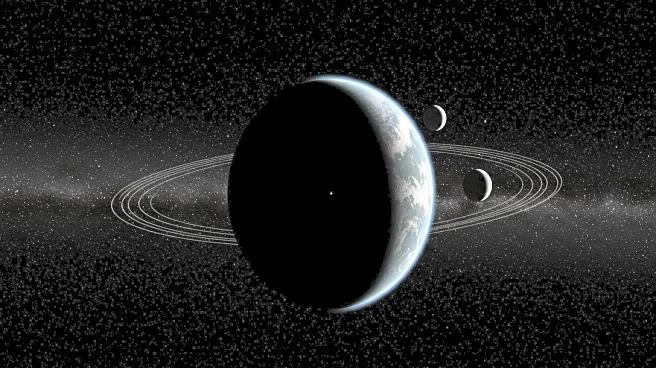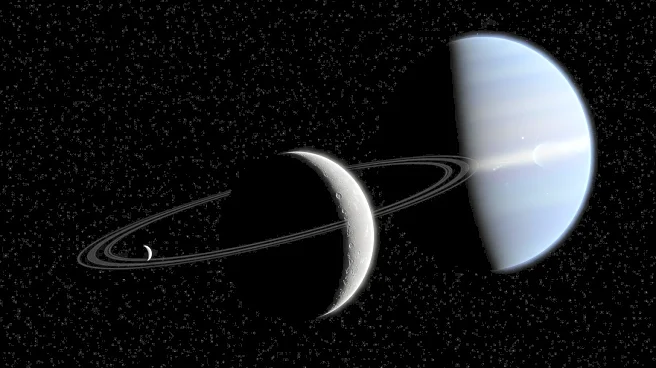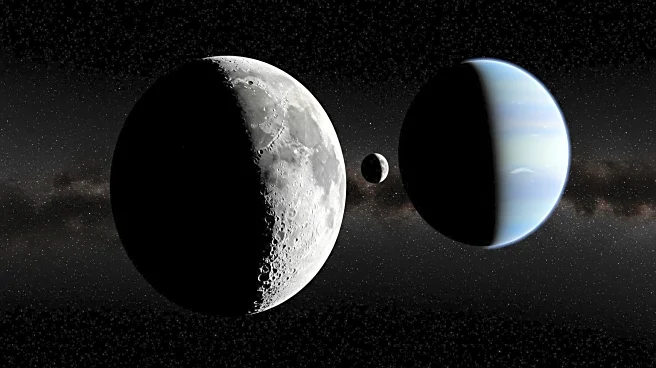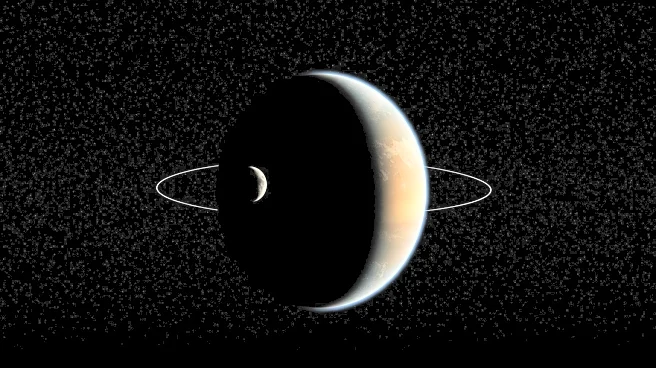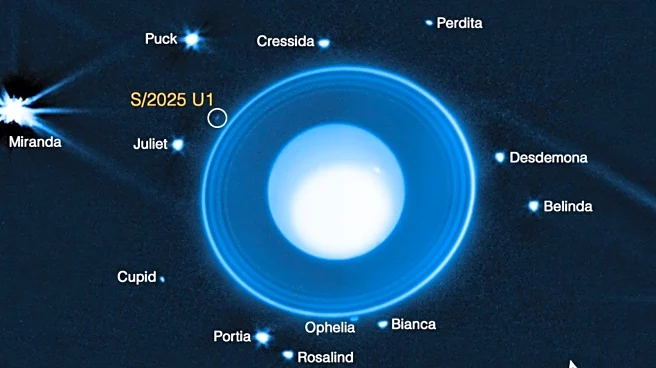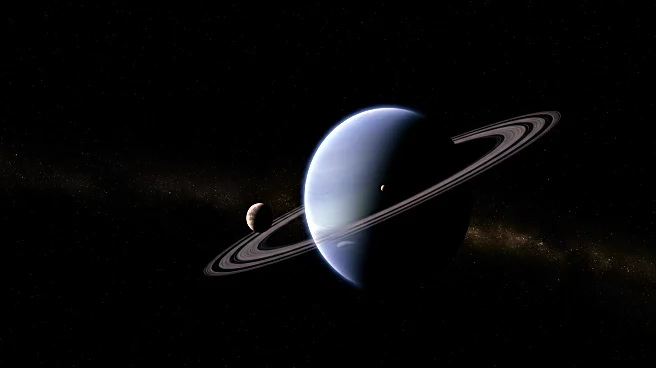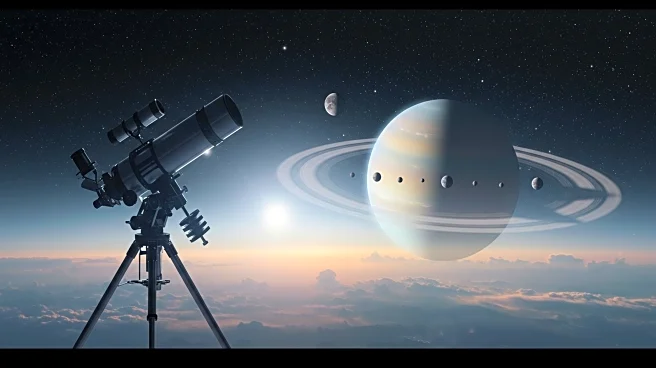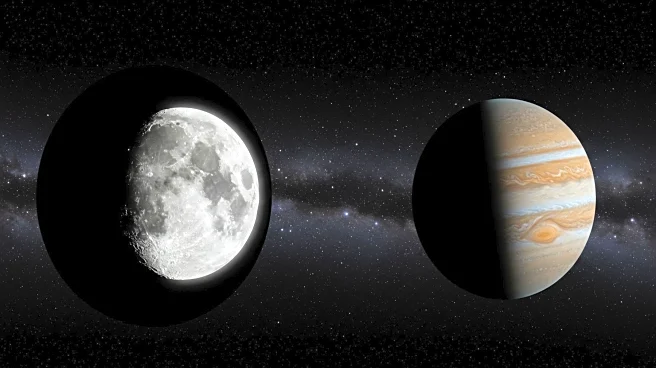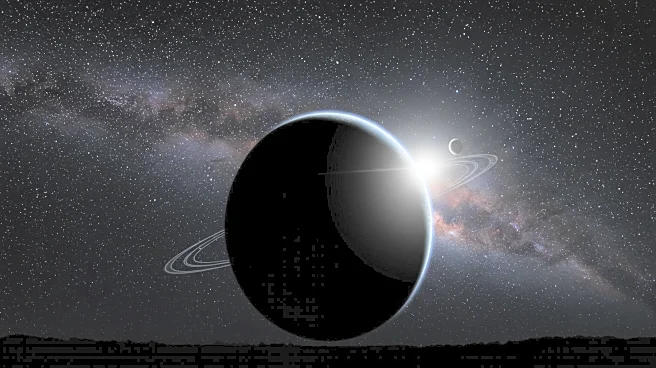What's Happening?
The James Webb Space Telescope has identified a previously unknown moon orbiting Uranus, increasing the planet's known moons to 29. This discovery, led by astrophysicist Maryame El Moutamid from the Southwest Research Institute, has not yet been peer-reviewed but was announced by NASA. The moon, provisionally named S/2025 U1, is estimated to be about six miles wide and orbits between Uranus' moons Ophelia and Bianca. The discovery was made while investigating Uranus' rings, which are believed to be influenced by such small moons.
Why It's Important?
The discovery of a new moon around Uranus is significant as it enhances the understanding of the planet's complex ring and moon system. These small moons are thought to play a crucial role in shaping the rings, potentially through gravitational interactions. The finding also suggests that more undiscovered moons may exist, which could provide further insights into the formation and evolution of Uranus' moons and rings. This discovery underscores the capabilities of the James Webb Space Telescope in advancing planetary science.
What's Next?
The newly discovered moon, along with another found in 2023, awaits official naming by the International Astronomical Union. Further observations are needed to refine the moon's orbit and confirm its characteristics. The scientific community anticipates more discoveries as the James Webb Space Telescope continues to explore Uranus and other celestial bodies, potentially leading to new insights into the dynamics of the solar system.
